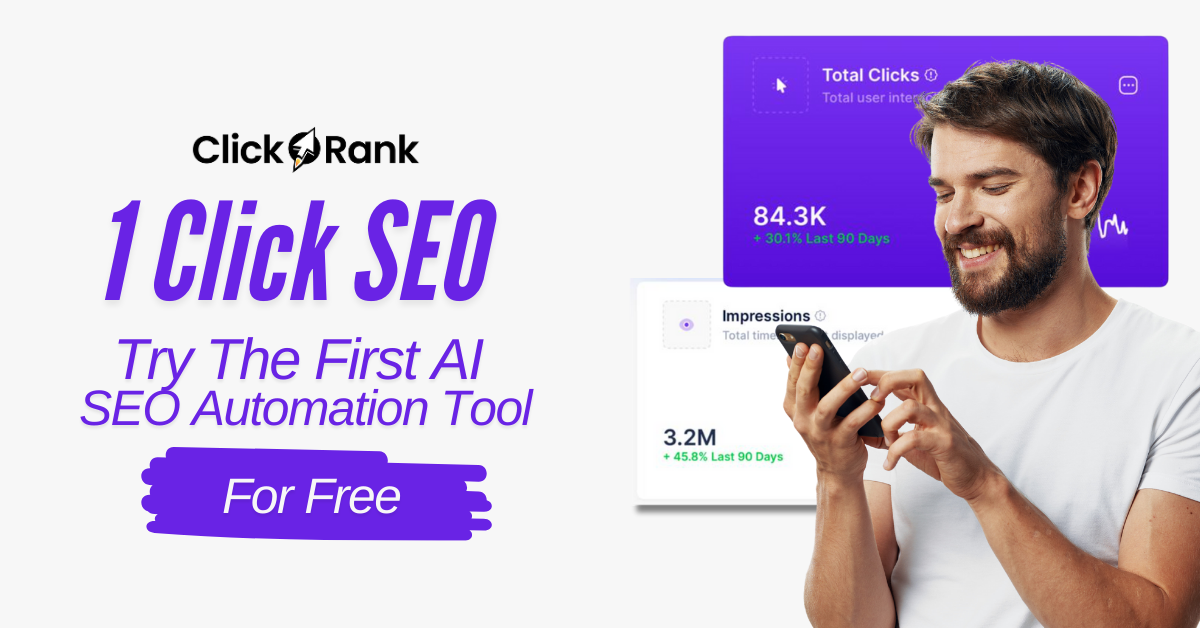I still remember the first time I tried ordering takeout from my favorite local diner on my phone – picture blurry menus, text that needed a magnifying glass, and frantic pinching and zooming. Ever since then, I’ve had a pet peeve: businesses that overlook the mobile experience. If you’re hoping to show up in local searches, ‘just passable’ doesn’t cut it anymore. Let’s talk real mobile-first: what it means, where most folks slip up, and why local SEO is absolutely riding on it.
Section 1: Mobile-First Isn’t Just “Mobile-Friendly”—It’s a Whole Mindset Shift
Let’s get one thing straight: mobile-first design is not just about making your website “work” on a phone. It’s a complete shift in how you think about your website from the ground up. If you’re still treating mobile as an afterthought, you’re missing out on local customers—and Google knows it.
Design for Small Screens and Touch First
Mobile-first means you start your design and development process with smartphones in mind. Every element—menus, buttons, images, text—should be easy to use with a thumb and readable on a small screen. Only after you’ve nailed the mobile experience do you scale up for tablets and desktops. This isn’t just about shrinking things down; it’s about reimagining your site for the way people actually use their devices.
- Responsive website design ensures your site adapts to any screen size, but mobile-first goes further by prioritizing mobile usability from day one.
- Fast load times, clear calls to action, and simple navigation are non-negotiable for mobile SEO and local rankings.
You Can’t Bolt on Mobile After Launch
Here’s the hard truth: you can’t just “add” mobile features to your existing desktop site and expect to win in local search. I’ve tried it myself, and the results were underwhelming. Google’s algorithms—and your customers—can tell when a site is just mobile-friendly versus truly mobile-first. A patchwork approach leads to slow load times, awkward layouts, and frustrated users who bounce before they even see your menu or contact info.
“Optimizing your site for mobile is no longer optional—it’s essential if you want to rank locally.” – Rand Fishkin
Real Results: A Local Bakery’s Mobile-First Transformation
Let me share a quick story. My friend owns a bakery in town, and for years, her website was technically “mobile-friendly”—but it was clunky and slow on phones. After a full mobile-first redesign, focusing on mobile usability and site speed, she saw a noticeable jump in walk-in customers. People found her hours, menu, and directions in seconds. Her local search rankings improved, and so did her bottom line. That’s the power of a true mobile-first approach.
Why Mobile-First Matters for Local SEO
Google now uses mobile-first indexing, meaning it looks at your site’s mobile version to determine your rankings. If your site isn’t optimized for mobile, you’re losing out on valuable local traffic. Core Web Vitals—metrics like loading speed, interactivity, and visual stability—are now key ranking factors. A mobile-first site naturally performs better on these metrics, leading to higher local conversion rates and happier customers.
- Start with mobile in mind: design, content, and navigation.
- Test your site on real devices, not just emulators.
- Prioritize speed and simplicity for every local visitor.
Remember, a mobile-friendly local website is the bare minimum. A mobile-first mindset is what sets you apart in local search—and in your customers’ eyes.

Section 2: Core Web Vitals—Where Speed and Usability Collide (and Google Notices)
Let’s get real: Core Web Vitals aren’t just another set of tech buzzwords. They’re the secret sauce behind whether people—and Google—stick around on your site or bounce off to a competitor. If you’re aiming for local search rankings, understanding and improving these metrics is non-negotiable. In fact, websites with excellent Core Web Vitals metrics see significantly higher local search placements and user engagement. So, what exactly are Core Web Vitals, and why should you care?
What Are Core Web Vitals?
Core Web Vitals are a set of specific factors that Google considers crucial in a webpage’s overall user experience. They focus on three main things:
- Site speed (Largest Contentful Paint): How fast does your main content load?
- Responsiveness (First Input Delay): How quickly can users interact with your site?
- Visual stability (Cumulative Layout Shift): Does stuff jump around as your page loads?
These aren’t just numbers for your developer to worry about. They directly impact whether your mobile-friendly local website climbs the search rankings—or gets left behind.
Site Speed: Your Digital First Impression
Let’s be honest: site speed is your first impression. Even my mom bounces from a site that takes forever to load! In the world of mobile SEO, every second counts. A slow site frustrates users and signals to Google that your site isn’t optimized for mobile. That’s a double whammy for your local search rankings.
Here’s the kicker: “Fast-loading, stable mobile pages are now a top local ranking factor.” – Aleyda Solis
Quick Wins for Site Speed Improvement
You don’t need a total site overhaul to see results. In fact, some of the most effective site speed improvements are surprisingly simple:
- Reduce image sizes: Oversized images are the #1 culprit for slow load times. Compress images before uploading and use modern formats like WebP.
- Cut bloated plugins: Every extra plugin adds weight. Audit your plugins and remove anything you don’t absolutely need.
- Enable browser caching: Let browsers save parts of your site so returning visitors get lightning-fast load times.
- Minimize code: Clean up unnecessary JavaScript and CSS. Less code = faster site.
Mobile Optimization: The Local SEO Advantage
Mobile optimization isn’t just about shrinking your desktop site to fit a smaller screen. It’s about creating a seamless, frustration-free experience for users on the go. When your site nails Core Web Vitals, you’re not just pleasing Google—you’re making it easier for local customers to find and engage with you.
Practical mobile site improvements yield measurable SEO benefits. Better Core Web Vitals mean higher local search rankings, more clicks, and more foot traffic to your business. If you want to win in local search, start by making your mobile site fast, stable, and easy to use.

Section 3: Local SEO in a Mobile World—Getting Found (or Not)
Did you know that 43% of all Google searches are local, and the majority of those happen on mobile devices? If your business isn’t embracing mobile optimization, you’re not just missing out—you’re practically invisible to the smartphone generation. Local SEO is no longer about just having a website; it’s about having a mobile-friendly business site that meets people where they are: on their phones, searching for what’s nearby, right now.
Why Mobile Optimization Matters for Local Search Rankings
Mobile-first optimization is the deciding factor for visibility and actionability in local search results. Google’s algorithms now prioritize sites that load fast, look great, and function smoothly on mobile devices. If your site is slow or clunky, you’ll drop in local search rankings—and your competitors will get the clicks instead.
As Joy Hawkins puts it:
“Mobile optimization lifts local discovery; you can’t win the neighborhood from desktop alone.”
Small Tweaks, Big Local Wins
Let’s look at a real-world example. A local coffee shop noticed their online traffic wasn’t translating into foot traffic. After a quick audit, they realized their Google My Business listing wasn’t mobile-friendly—buttons were hard to tap, and the directions link was buried. They made a few simple changes:
- Added a prominent click-to-call button
- Ensured the “Get Directions” link worked seamlessly with Google Maps
- Improved page speed by compressing images and cleaning up code
The result? Their listing became easy to use on any phone, and foot traffic doubled within a month. That’s the power of mobile-friendly local websites.
Features That Make or Break Local Sales
When someone searches for your business on their phone, they want answers fast. Here are the features that can turn a search into a sale:
- Click-to-call: Let customers call you with one tap—no copying and pasting numbers.
- Instant directions: Integrate with Google Maps so users can find you without hassle.
- Fast load times: Use Google’s Core Web Vitals to ensure your site loads quickly, even on slower connections.
- Easy-to-read text and buttons: Make sure everything is tap-friendly and legible on small screens.
Optimizing for Local Search Intent
Most local intent searches—like “coffee shop near me” or “best plumber in [city]”—happen on mobile. If your site isn’t optimized, Google is less likely to show your business in the coveted local pack or map results. Focus on:
- Updating your Google My Business profile with accurate info and mobile-friendly links
- Using schema markup to highlight your address, phone, and hours
- Encouraging reviews, which show up prominently in mobile search
Remember, small tweaks often yield big gains in local engagement. In the mobile world, local SEO is all about making your business easy to find—and even easier to choose.

Conclusion: It’s Not About “Mobile-Friendly”—It’s About Local Relevance on the Smallest Screen
If you’ve been thinking of “mobile-friendly” as just a checkbox or a pretty layout, it’s time to rethink your approach. For the smartphone generation, mobile usability and local SEO are inseparable. A truly responsive website design isn’t just about shrinking your desktop site to fit a phone—it’s about creating a seamless, relevant experience that meets your local customers exactly where they are: on the go, in your neighborhood, and searching for solutions right now.
Let’s be honest: today’s users judge your business in seconds. Your mobile site is often their first impression, and as Greg Gifford wisely says,
“Your mobile site is your handshake with the local customer—make it count.”
If your site is slow, clunky, or hard to navigate, people won’t just bounce—they’ll remember. And in a world where reputation is everything, that’s a risk you can’t afford.
But here’s the good news: you don’t need perfection. You need a solid foundation. Focus on the basics—fast load times, clear calls to action, easy navigation, and content that speaks directly to your local audience. Core Web Vitals aren’t just technical jargon; they’re the building blocks of trust and credibility. When you get these essentials right, you’re not just optimizing for Google—you’re building real-world relationships and driving foot traffic to your door.
Think of your mobile site as the digital curb appeal of your business. Is it inviting? Does it reflect your brand’s personality and local relevance? Or are people scrolling past, never to return? Authentic, locally relevant mobile-friendly business sites stand out in crowded search results. They don’t just attract clicks—they inspire visits, reviews, and loyalty.
Remember, mobile optimization isn’t a one-and-done project. The most successful local businesses treat it as an ongoing process. They monitor performance, listen to customer feedback, and keep improving. Research shows that continuous mobile improvements lead to sustained local SEO growth. So, don’t get stuck chasing the latest trends or obsessing over every detail. Instead, make sure your site is always welcoming, fast, and relevant for the people who matter most—your local customers.
In the end, mobile-first isn’t just about aesthetics. It’s about conversion, reputation, and real-world results. When your mobile site delivers value, your business becomes a trusted part of the local community. So take a fresh look at your site today. Are you ready for the smartphone generation, or are you still just “mobile-friendly”? The difference could be everything for your local success.
TL;DR: A truly mobile-first site—fast, frictionless, and locally tuned—is your ticket to local SEO wins. Don’t settle for good enough; optimize for today’s on-the-go, smartphone-centric world.
You may be interested

